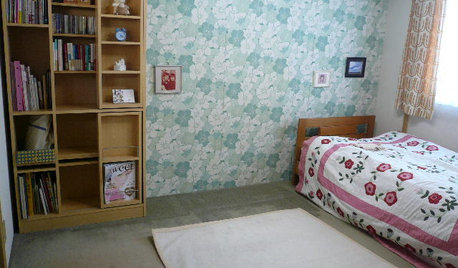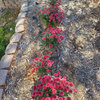Back a couple months ago, Stevation had a question about timing a flush of flowers. Since this was in reference to roses in his garden - I bit my tongue.
My success with outdoor roses is so poor! And, it is quadruple embarrassing since I worked for 7 years in a commercial rose greenhouse . . .
I find the outdoors just so challenging but maybe I just don't put enuf effort into the roses. There's a half dozen in my front yard that do fair to middling, that's it.
I can share some of the information I picked up in the greenhouse (if'n ya don't smirk while reading). Moreover, I can relate that knowledge to another flower, snapdragons. And, I can differentiate between disbudding and pinching. Apparently, there's some confusion of these terms. I consider both tasks very important in the flower gardens and disbud my dahlias religiously, especially.
Disbudding is the removal of the lateral flower buds leaving the central bud to bloom. This is essential for the production of long-stemmed roses. Some dahlia varieties would be surrounded by disbuds - it may even be difficult to see the flower thru the "forest" of disbuds.
A good time to remove the laterals is just after they have emerged from the foliage. The leaf remains to hide the tiny scar. Waiting later, leaves a larger scar or a "stump" on the stem - not so attractive and the central stem won't grow as long, nor that central flower so large. Trying to find the really, really small buds along the stem, however, and "poke" them out with the tip of a finger is a little too tedious for me. Besides dahlias, for one, have an irritating habit of regrowing these buds if done too early.
BTW - waiting until the central bud begins to show color is waaay too late to bother with disbudding, unless you are just trying to make a bouquet more attractive. Certainly with dahlias, the entire bouquet will die before there's any chance of the bud actually blooming. It may as well be taken off.
Pinching - The snapdragons come on with a rush if they aren't pinched. Pinching, simply is removing the growing tips so that the plant must start growing elsewhere on the stem. Lateral buds develop and flowering is delayed. As I see it, I had a successful pinching of the snaps this year.
When I set the plants out, I pinched one-quarter of them. Two weeks later, I pinched another quarter. And 2 weeks after that, I pinched another quarter. Or, at least, I tried to get a quarter each time 3/4 of the plants pinched over the course of 4 weeks. This is the first year I've pinched 3 times.
The pinching broke up the plants so that they bloomed at different times thru the season. We've now run entirely thru that season and they have started producing second cuttings from the same plants.
The reason I know that I lost track counting during those early weeks of pinching is because there wasn't a steady production of flowers. That wouldn't have happened anyway what with the changing weather thru the Spring and Summer. The plants weren't always growing at the same rate. Further, plants have a mind of their own . . . don't they?
Timing - well, timing can be approximated. In the rose greenhouse, the different varieties were expected to bloom from 6 to 8 weeks after a pinching. It seems to me that plants growing well outdoors also run about 6 to 8 weeks in bloom cycles - snaps, zinnias, dahlias, roses (maybe ;o).
Ever wonder where the rushes of roses come from for Valentine's Day, Mother's Day, etc? Columbia, right? Well yeah, but the domestic greenhouses do a real good job of having tons of roses (6 to 8 weeks after a pinching) just in time for these flower holidays. It's how they make most of their profits.
Anyway, back to my snaps: since they are being cut and placed in buckets twice each week thru the Summer, it is fairly easy to make guesses on production without counting every stem. What my pinching accomplished was never having less than about 40% of the peak production. So, it wasn't very steady but I can assure you - without pinching I'd have been buried under the snaps and then they would have dwindled to a mere handful over weeks and weeks.
Steady or in a flush of blooms  itÂs up to you!
digitS'















stevation
digitOriginal Author
Related Professionals
Roxbury Crossing Landscape Architects & Landscape Designers · Burien Landscape Contractors · Eagle Landscape Contractors · Fair Lawn Landscape Contractors · Federal Way Landscape Contractors · Fishers Landscape Contractors · Kaysville Landscape Contractors · Middle River Landscape Contractors · Newnan Landscape Contractors · Plainview Landscape Contractors · Seven Hills Landscape Contractors · South Lake Tahoe Landscape Contractors · West Allis Landscape Contractors · Brockton Solar Energy Systems · Franklin Solar Energy Systemsdavid52 Zone 6